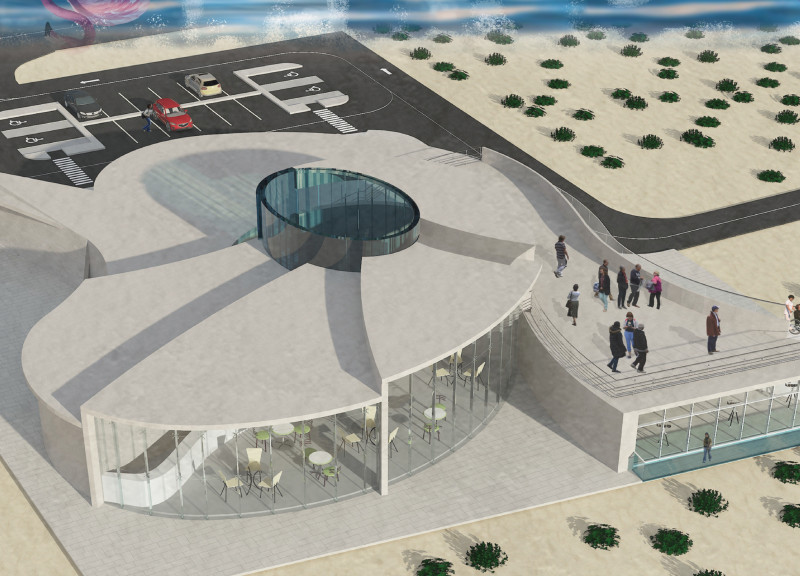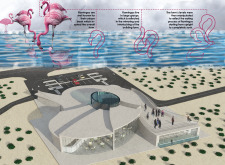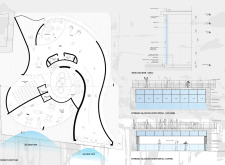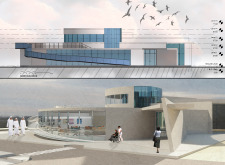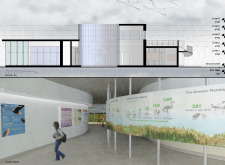5 key facts about this project
The design is inspired by the unique characteristics and behaviors of flamingos, located in the Al Wathba Wetland Reserve. The building serves a variety of functions, including a waiting area, offices, and exhibition spaces, all while taking on a form that reflects the essence of these birds. The design emphasizes connectivity and interaction, mirroring the social aspects of flamingo life.
Design Concept
The architecture incorporates mirroring and interlocking elements that enhance its visual appeal and promote a sense of community. The form of the building represents the feeding process of flamingos, moving from an upright position to a submerged stance. This transformation adds a dynamic element to the overall experience of the space.
Spatial Organization
The layout is thoughtfully arranged to include key areas such as a lobby, reception, and various amenities. This design prioritizes accessibility and allows visitors and staff to move easily through the environment. The organization of the space encourages interaction among users while accommodating different types of activities.
Architectural Features
Important architectural elements include roof insulation, which improves energy efficiency, and floor overhangs that provide necessary shading. Glass fins and spider fittings contribute to a more open atmosphere, creating clear views between inside and outside. Glazed vision panels allow natural light in, while tinted glass helps control the internal climate and enhances the overall look of the building.
Exhibition Areas
Within the project, exhibition spaces aim to educate visitors about local wildlife. They present information on bird life cycles and various species statistics. This aspect of the design integrates education into the overall experience, making the building not just a functional space but also a resource that informs about the surrounding nature.
The design culminates in an elevated terrace that offers views of the nearby wetlands, encouraging visitors to engage with the ecological environment. This design detail reinforces the connection between the structure and its natural setting.


